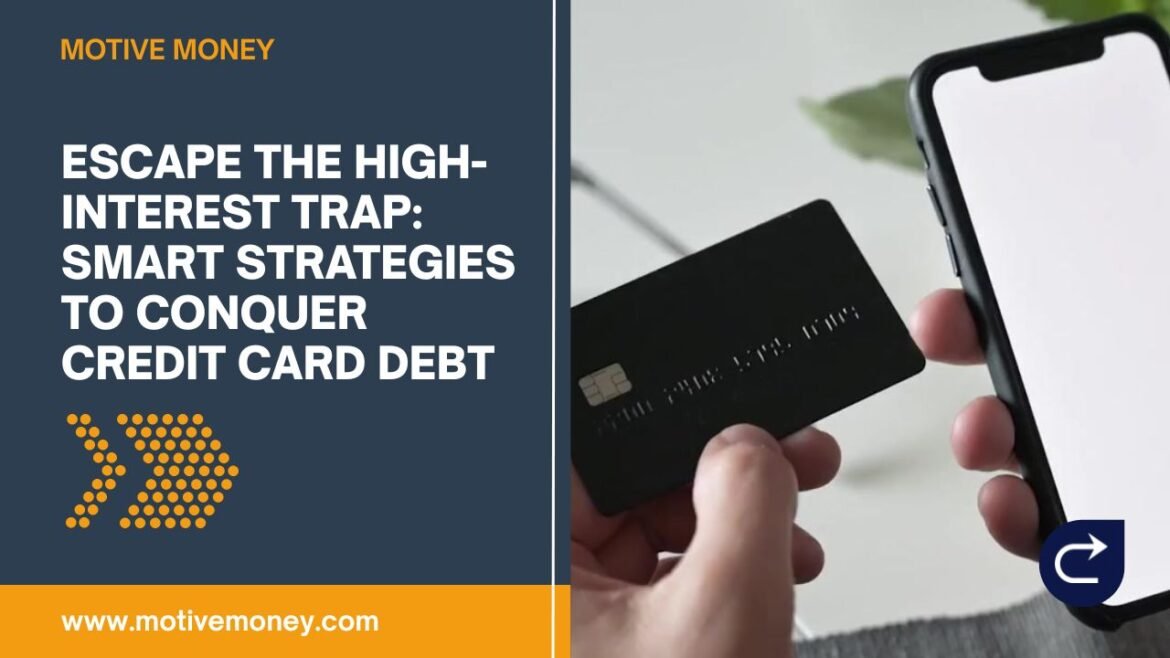For many young professionals and families, credit card debt can feel like a heavy anchor, dragging down financial progress and fueling constant stress. The insidious nature of high-interest credit card debt is that it grows rapidly, making it incredibly difficult to pay off the principal balance when a significant portion of your payment goes straight to interest.
If you’re caught in this trap, know that you’re not alone, and more importantly, that there are proven, smart strategies to conquer credit card debt and reclaim your financial freedom. Breaking free from this cycle requires a clear plan, discipline, and the right tools.
This comprehensive guide will walk you through the most effective strategies to eliminate high-interest credit card debt. We’ll cover popular payoff methods, smart balance transfer options, negotiation tactics, and crucial steps to prevent future debt, empowering you to escape the trap and build a healthier financial future.
Understanding the High-Interest Trap of Credit Card Debt
Credit card debt is one of the most expensive forms of debt due to its high Annual Percentage Rates (APRs), which often range from 15% to 30% or even higher. This means if you only make minimum payments, a large chunk of your payment goes towards interest, and it can take years, even decades, to pay off a seemingly small balance.
- Compounding Interest: Interest is calculated not just on your original balance but also on the accumulated interest. This is how debt can snowball rapidly.
- Minimum Payments Trap: Minimum payments are often designed to keep you paying for as long as possible, not to pay off your debt efficiently.
Smart Strategies to Conquer Credit Card Debt
Taking control starts with a clear, aggressive strategy. Here are the most effective methods:
- Stop Accumulating New Debt (Crucial First Step): Before you can pay it off, you must stop adding to it. Put away your credit cards, or freeze them. Focus on using cash or a debit card for all purchases until you have your debt under control.
- Choose a Payoff Method:
- Debt Avalanche Method: This strategy involves listing all your debts from highest interest rate to lowest. Pay the minimum on all debts except the one with the highest interest rate, on which you focus all extra payments. Once that’s paid off, you roll that payment amount into the next highest interest-rate debt. This method saves you the most money on interest over time.
- Debt Snowball Method: List all your debts from smallest balance to largest. Pay the minimum on all debts except the one with the smallest balance, on which you focus all extra payments. Once that’s paid off, you roll that payment amount into the next smallest debt. This method provides psychological wins, helping you stay motivated.
- Consider a Balance Transfer Credit Card: If you have good credit, you might qualify for a balance transfer credit card with a 0% introductory APR for 12-21 months. This gives you a crucial interest-free period to pay down your debt rapidly. Be aware of balance transfer fees (typically 3-5%) and ensure you can pay off the balance before the introductory period ends. Learn more about balance transfer credit cards from a reputable consumer finance site like the Consumer Financial Protection Bureau (CFPB).
- Explore a Debt Consolidation Loan: If you have multiple high-interest credit card debts, a personal loan with a lower, fixed interest rate can consolidate them into one manageable monthly payment. This simplifies your repayment and can save you significant interest. Be cautious about extending the loan term too much.
- Negotiate with Creditors: If you’re struggling to make payments, don’t ignore the problem. Contact your credit card companies. They might be willing to lower your interest rate, waive late fees, or offer a temporary hardship plan. Being proactive can save your credit score.
- Boost Your Income: Every extra dollar you earn can be directly applied to your credit card debt. Consider a side hustle, selling unused items, or negotiating a raise at work. Even small amounts can make a difference.
- Create a Strict Budget: A detailed budget is crucial to free up money for debt repayment. Track every expense, identify areas to cut back, and ensure your debt payments are a priority. Get started with effective budgeting: The Ultimate Beginner’s Guide to Budgeting: Take Control of Your Money Today.
Preventing Future Credit Card Debt
Once you’ve escaped the trap, it’s vital to build habits that prevent recurrence:
- Build an Emergency Fund: A robust emergency fund (3-6 months of expenses) prevents you from relying on credit cards for unexpected costs. Learn why this is vital: Build Your Financial Fortress: The Essential Guide to Emergency Funds.
- Live Within Your Means: Only spend what you can afford to pay off in full each month.
- Use Credit Cards Responsibly: If you use credit cards, pay the statement balance in full every single month to avoid interest.
- Monitor Your Credit Report: Regularly check your credit report for errors and monitor your credit health. Understand your credit: Unlocking Your Financial Story: A Beginner’s Guide to Your Credit Report.
Conclusion: Reclaim Your Financial Freedom
Conquering high-interest credit card debt is one of the most impactful steps you can take towards achieving true financial stability and financial freedom. It requires commitment and a smart strategy, but the payoff – peace of mind, improved cash flow, and the ability to save and invest for your future – is immeasurable.
Choose a payoff method that motivates you, relentlessly cut unnecessary expenses, and commit to not accumulating new debt. By taking decisive action, you can break free from the high-interest trap, rebuild your financial health, and set yourself on a path to lasting financial security. The journey to debt freedom starts now.
